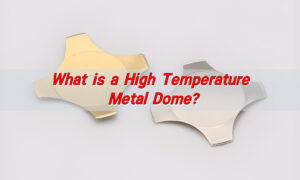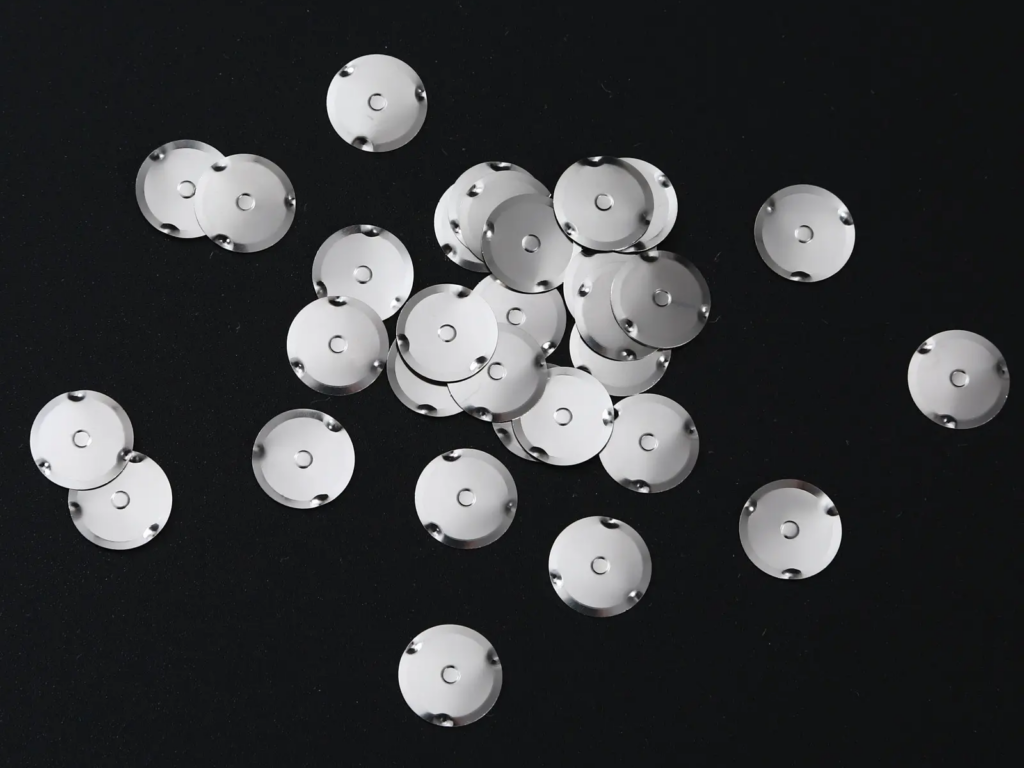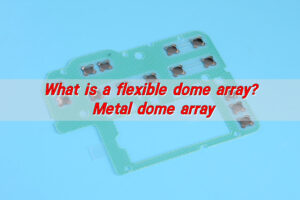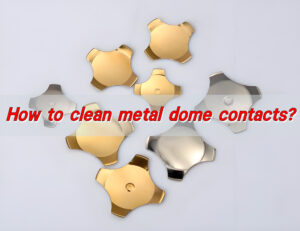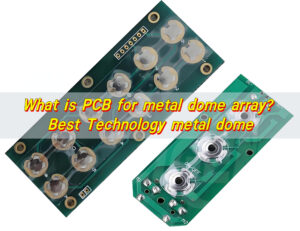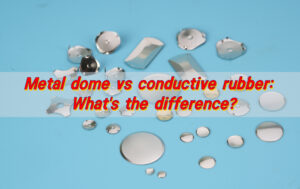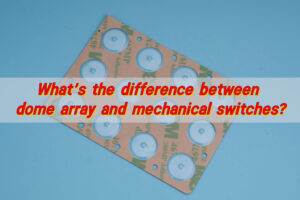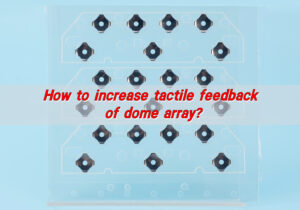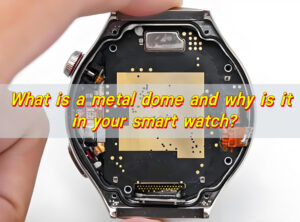The dome button is mainly composed of a button shell, a dome and a contact point. The dome is usually made of metal material with good elasticity and conductivity. When the button is pressed, the dome deforms and contacts the contact point, thereby realizing the conduction of the circuit; when the button is released, the dome returns to its original shape and the circuit is disconnected.
What is a dome button?
The dome button is a common electronic component, commonly used in mobile phones and other electronic devices as a component of the key. The dome button, also known as metal dome, is mainly made of stainless steel material with different specifications of ultra-thin and ultra-thick to ensure the durability and precision of the key.
The working principle of the dome button is based on its unique structural design. When the key is under pressure, the center point of the dome will be concave and contact the circuit on the PCB board, thus forming a loop, allowing the current to pass through and realizing the key function. This design not only improves the sensitivity of the key, but also ensures the comfort and durability of use.
Dome buttons are widely used in various electronic devices, including but not limited to membrane switches, dome contact switches, PCB boards and FPC boards, as well as medical devices and other products.
What is the point of a dome?
The main uses of metal dome include mechanical transmission, electrical connection or disconnection, pressure sensing and other functions.
Metal dome is made of metal materials (such as beryllium copper, stainless steel, spring steel, brass, etc.), which is elastic and can deform when subjected to external force, and quickly return to its original shape after the external force is removed. This feature makes it an ideal choice for realizing the above functions.
The specific application scenarios of metal dome are very wide, including but not limited to the following aspects:
Electronic products: such as car navigation systems, remote controls, MP3/MP4 players, mobile phones, etc., using their good conductivity, long life, waterproof and dustproof characteristics.
Communication products: such as mobile phones, cordless phones, mother-and-child machines, walkie-talkies, etc., with their stable rebound force and ultra-long life to provide high-quality tactile feedback.
Medical devices: such as micro motors, sensors, relay switches, etc., using their precise mechanical transmission and electrical connection functions.
What are the disadvantages of domes?
The main disadvantages of metal domes include:
Easy to produce false press: The pressing performance of metal domes may cause false press due to unreasonable structural design, affecting the use effect.
Conduction performance is affected by the environment: It is difficult to completely avoid dust in the production process of metal domes without dots, such as round and waist round, which may lead to poor conduction performance.
Specific explanation of the causes and effects of these disadvantages:
False press problem: This is usually due to the structural design of the required domes, which is easy to cause false press when pressing, affecting the normal use of the product.
Conduction performance is affected: It is difficult to completely avoid dust in the production process of metal domes without dots. These tiny dust particles may cause poor contact between the metal domes and the circuit, thereby affecting the conduction performance of the circuit.
Provide some improvement measures or alternatives ?:
Optimize structural design: Reduce the occurrence of virtual pressing by improving the design and manufacturing process of metal dome.
Use patch silicone rubber foam: As an alternative, patch silicone rubber foam has better conduction performance and stability, and can reduce the conduction problem caused by dust.
How long do domes last?
The service life of the dome is generally between 500,000 and 1 million times, and the specific life depends on the type of dome and the material used.
Different types of dome have different service lives. The service life of hardware dome is generally between 500,000 and 1 million times, the service life of the touch switch is 50,000-70,000 times, the service life of imported dome is greater than 100,000 times, and the service life of stainless steel dome is even higher.
Factors affecting the service life of dome include the materials used, the design structure and the use environment. In addition, choosing appropriate materials and reasonable design are also key factors in extending the service life of dome.
Are domes expensive?
The price of dome varies according to the type and specification. Generally speaking, the price range of dome is wide, ranging from a few cents to a few yuan.
The price of dome is affected by many factors, including material, specification and purpose. For example:
Material: dome can be made of stainless steel, manganese steel, copper and other materials, and the cost and price of different materials vary greatly.
Specification: The size, shape and purpose of the dome will also affect its price. For example, the price of dome of different shapes such as V-shaped dome and U-shaped dome is different.
Purpose: The purpose of the dome will also affect its price. For example, the price of dome used for battery connection is different from that of dome used for mechanical fixation.
What is the best material for domes?
The best material for dome is stainless steel. Stainless steel is widely used in the production of various dome due to its good elasticity and corrosion resistance. In particular, stainless steel materials with a thickness of 0.05mm-0.1mm are often used in membrane switches, contact switches, PCB boards, FPC boards, medical devices and other products.
Stainless steel dome has the following advantages:
Good elasticity: Stainless steel has good elasticity and can meet the needs of various complex shapes.
Corrosion resistance: Stainless steel has strong corrosion resistance and is suitable for humid or corrosive environments.
Moderate hardness: The hardness of stainless steel is generally between 350HV and 550HV, and it can become a finished product after die stamping and related cleaning.
What is the best shape for a dome?
The best shape of a dome is round. Round dome performs well in many applications because it can provide stable performance and long service life.
The reason why round dome is considered the best shape is mainly because they can maintain a stable shape when subjected to force, reduce deformation, and thus ensure good conductivity and reliability. In addition, the circular design also helps to reduce stress concentration and extend the service life of the dome.
In addition to the circle, common dome shapes include rectangles, trapezoids, triangles, etc. These shapes have their own characteristics and are suitable for different application scenarios. For example, rectangular and trapezoidal dome can provide a larger contact area in a specific design, while triangular dome may be more flexible in design.
Dome buttons have become an indispensable part of various electronic devices and mechanical devices with their compact size, sensitive response and reliable performance. Whether it is to meet users’ needs for good feel and convenient operation, or to ensure high reliability and stability in harsh environments, dome buttons play an irreplaceable role.


